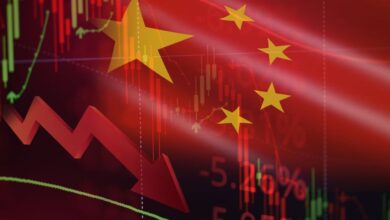E-commerce Price Wars And Economic Shifts Reshape China’s Retail Landscape

$9988.HK
In China’s e-commerce sector, Beixiazhu, once a thriving hub known for live-streaming commerce, has seen a dramatic decline in activity. Located on the outskirts of Yiwu in Zhejiang province, the village initially attracted merchants seeking quick success through platforms like Kuaishou Technology and ByteDance’s Douyin. However, intense competition has transformed it from a bustling marketplace to a quiet area, highlighting the volatility of the industry.
The fierce rivalry among sellers has led to aggressive price-cutting, ultimately diminishing profitability and sustainability. This situation, referred to locally as “juan,” signals a significant concern for the Chinese government, which aims to enhance its supply chain capabilities. In response, policymakers are shifting economic strategies to mitigate the destructive cycle of excessive competition.
The broader e-commerce landscape reflects similar struggles, with industry giants like Alibaba’s Taobao and JD.com revising their approaches to maintain consumer interest amid economic headwinds. PDD Holdings, through its platforms Pinduoduo and Temu, has notably thrived by catering to budget-conscious consumers, reporting a 90% growth in profit and revenue in 2023. However, persistent issues such as oversupply and weakened purchasing power continue to pose challenges.
At the Yiwu International Trade Market, merchants are facing shrinking profit margins due to rising operational costs and relentless price wars. Many are now prioritizing survival and focusing on innovation in product design to differentiate themselves in a saturated market. Recognizing the need for intervention, the government has introduced measures to stabilize the economy.
Beijing’s recent stimulus package aims to reduce borrowing costs and revitalize the housing market, which could gradually influence the e-commerce sector. As the industry navigates these turbulent conditions, there is a growing emphasis on product quality, service excellence, and infrastructure support, moving beyond mere competitive pricing. This strategic pivot may signal the dawn of a new era for China’s e-commerce landscape, fostering healthier competition and encouraging sustainable growth
**DISCLAIMER: THIS CONTENT IS FOR INFORMATIONAL PURPOSES ONLY AND SHOULD NOT BE INTERPRETED AS INVESTMENT ADVICE. INVESTING INVOLVES RISK, INCLUDING THE POTENTIAL LOSS OF PRINCIPAL. READERS ARE ENCOURAGED TO CONDUCT THEIR OWN RESEARCH AND CONSULT WITH A QUALIFIED FINANCIAL ADVISOR BEFORE MAKING ANY INVESTMENT DECISIONS.**



